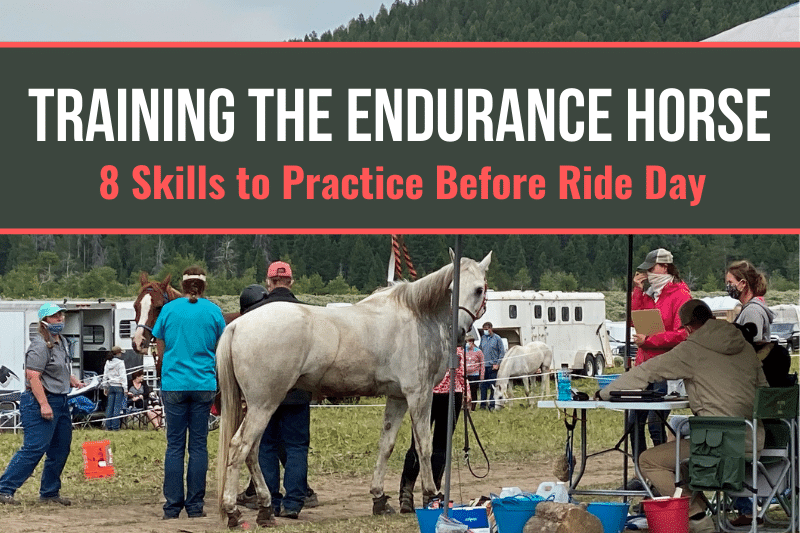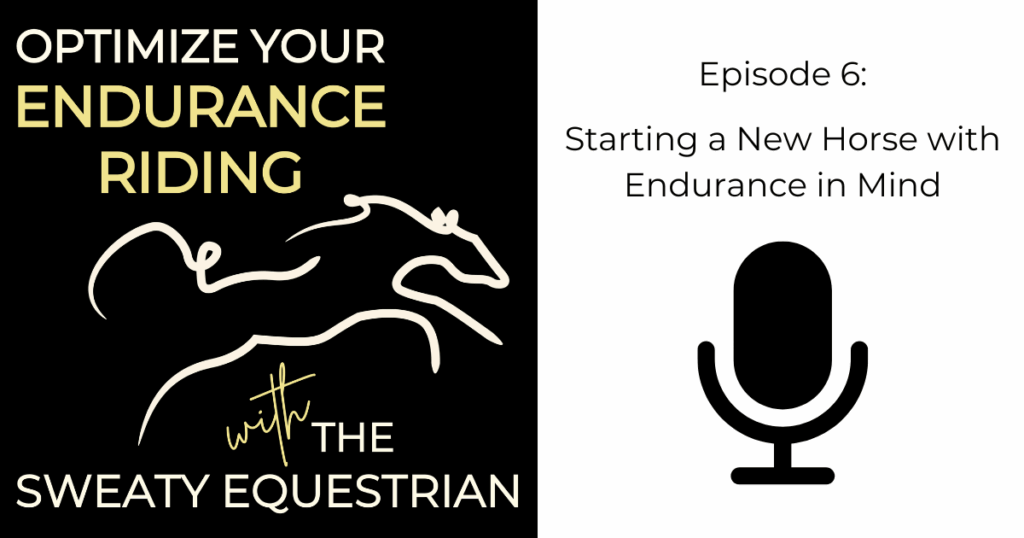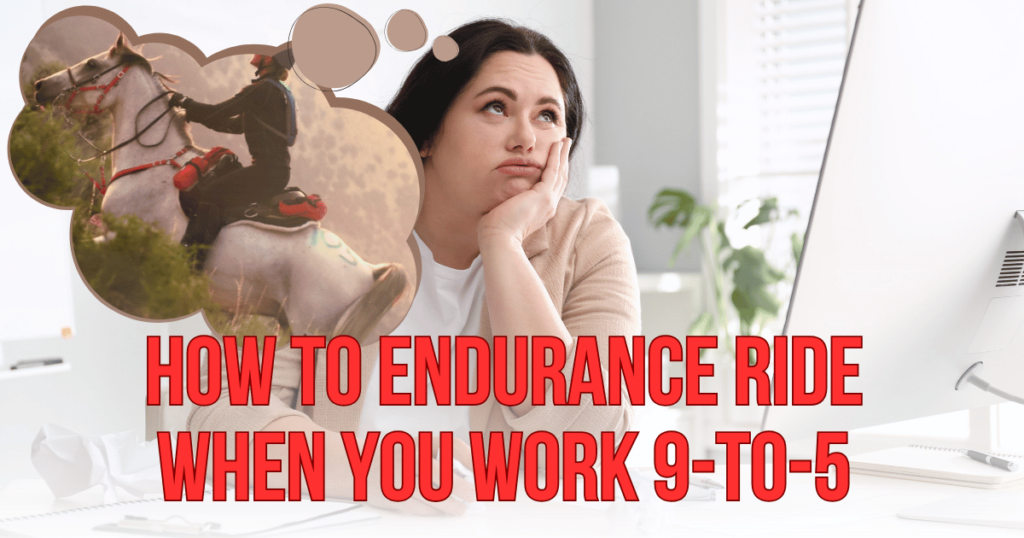Preparing your horse for his first endurance ride takes more than physical conditioning. You also need to train him for his new job. Not only will he perform better, but he’ll feel more confident and you will be doing your part to ensure the safety of yourself and others.
Training the Endurance Horse
Endurance horses have a unique job in the equestrian world. Even if your horse has been under saddle for years, he may not have the skills necessary for success in the endurance environment.
Here are 8 things your horse should be able to do before ride day:
1. Trailer Load Willingly
Endurance riding comes with the possibility that your horse will need to load in a strange trailer if he’s in trouble at a hold. You might also need him to load quickly to get to a treatment vet. And, of course, you need to get him to ride camp in the first place – ideally in a calm state of mind.
For these reasons, it’s worth your while to train your horse to load. Borrow friends’ trailers, if possible, to make sure he’ll hop righ in anything from a two-horse straight load to a stock trailer.
2. Be Confined in Camp
Once you get your horse to camp, you’ll need to confine him in some way. Whether you choose portable corral panels, an electric fence system, or a high-tie, be sure to practice at home. Your horse should understand and accept your confinement system so thoroughly that he not only won’t challenge it, but he feels comfortable eating, drinking, and sleeping there as well.
3. Be Handled by Strangers
Your horse needs to be comfortable with strangers touching him. Make sure he’ll stand still for someone to listen to his heart rate using a stethoscope. He’ll also need to tolerate the vet checking his gums, pinching the skin of his shoulder, running hands down his back and legs, lifting his tail to check anal tone, walking around him, and using resting a stethoscope near his flanks to check gut sounds.
4. Trot in Hand
Your horse will need to trot out for the vet. Training for this will save your horse some confusion and you the frustration of trying to drag or drive him along when he’d rather stand still. It will also help him earn better scores from the vet.
Train your horse to trot off promptly, with energy, out and back in a straight line. Once he has that down, practice trotting in a 20-meter circle. You could be asked to do that if you show for Best Condition, and you’d be surprised how much harder it is than a regular trot-out.
5. Stand for Mounting
You might be able to do the one-legged-stirrup-dance when you’re feeling fresh on ride morning, but I guarantee it’ll get really old by the time you’ve dismounted to open fifteen gates out on a rangeland loop. Teach your horse to stand still for mounting, even when he’s excited to go, and you’ll thank yourself for the rest of his life.
6. Rate on the Trail
One of the most important skills for an endurance horse is rating (also called pacing) on the trail. For many horses, it’s also one of the most challenging! Ideally, your horse should remain at both the gait and speed you request, without fighting to go faster.
I teach all my horses to walk, trot, and canter at any speed on a loose rein. This usually goes great during conditioning…but I know I’m not alone when it all goes out the window at an endurance ride!
Still, it’s important to do your best to train your horse to rate. If he has the skill, he’ll get better at using it over time.
7. Lead, Follow, or Get Out of the Way
Out of courtesy to fellow competitors, riders should do their best to avoid leapfrogging others on the trail. This means that your horse should tolerate passing and being passed by others. He should know how to do this while moving (such as on a wider trail where two or more horses can travel abreast) or while stopped (if you need to pull over to let someone by on a singletrack).
After passing, your horse should understand that he needs to keep moving out rather than slowing down to stay with his new best friend. After being passed, he should maintain the pace you’ve set rather than trying to catch up.
Again, this one is easier said than done. It helps to play leapfrogging games with friends during conditioning rides, but you’ll probably have to resign yourself to some training during the event itself as well. The long-term payoff will be worth the hassle!
8. Eat and Drink at Every Opportunity
If you’re like me, you spent your equestrian youth being taught not to let your horse eat during rides. Your horse may have gotten the same education. However, eating during an endurance ride is a crucial skill for your horse to master.
During conditioning rides, teach your horse to stop and graze on cue. (I use hand pressure on the middle of his crest.) Many horses also get quite good at grabbing tall grass or leaves on the fly.
You’ll also want your horse to understand that he should eat and drink as soon as you dismount for a break. I always have soaked beet pulp or some sweet water (a couple gallons of water mixed with a cup of rice bran) waiting at the trailer after conditioning rides. This way, my horses learn that after riding comes snacking, and they don’t waste time at holds.
Want even more ideas for preparing your horse for successful endurance riding? Download my FREE Endurance Horse Preparation Checklist!
Prepare for Backsliding
Don’t be surprised if, despite your best efforts, your horse’s brain seems to fall out of his head when you get to an endurance ride.
My horse Ledger is a kind, reliable guy at home. I can go weeks without ever tightening a rein during conditioning rides. We did all the training listed above, and more…but at our first endurance ride, he ran over me during our trot-out and tried to kick the vet. To this day, he’s very difficult to rate for the first twenty miles or more.
In these situations, just do your best and pay special attention to the safety of others. As long as you take your unruly horse away from the crowd and work with him appropriately, no experienced rider should judge you harshly. We have all been there.
Laying these foundational skills before you get to your horse’s first endurance ride — and reinforcing them throughout his career — will set you both up for success in the long run.





Thank you! You’ve given me a good place to start.